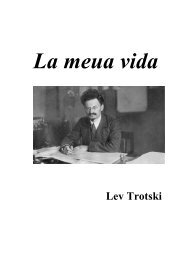Socialism: Utopian and Scientific - MIA
Socialism: Utopian and Scientific - MIA
Socialism: Utopian and Scientific - MIA
Create successful ePaper yourself
Turn your PDF publications into a flip-book with our unique Google optimized e-Paper software.
<strong>Socialism</strong>: <strong>Utopian</strong> <strong>and</strong> <strong>Scientific</strong> (Chpt. 3)fact; its ideal reflection in the minds, first, of the class directly suffering under it, the working class.Now, in what does this conflict consist?Before capitalist production — i.e., in the Middle Ages — the system of petty industry obtainedgenerally, based upon the private property of the laborers in their means of production; in the country,the agriculture of the small peasant, freeman, or serf; in the towns, the h<strong>and</strong>icrafts organized in guilds.The instruments of labor — l<strong>and</strong>, agricultural implements, the workshop, the tool — were theinstruments of labor of single individuals, adapted for the use of one worker, <strong>and</strong>, therefore, of necessity,small, dwarfish, circumscribed. But, for this very reason, they belonged as a rule to the producer himself.To concentrate these scattered, limited means of production, to enlarge them, to turn them into thepowerful levers of production of the present day — this was precisely the historic role of capitalistproduction <strong>and</strong> of its upholder, the bourgeoisie. In the fourth section of Capital, Marx has explained indetail how since the 15th century this has been historically worked out through the three phases of simpleco-operation, manufacture, <strong>and</strong> modern industry. But the bourgeoisie, as is shown there, could nottransform these puny means of production into mighty productive forces without transforming them, atthe same time, from means of production of the individual into social means of production only workableby a collectivity of men. The spinning wheel, the h<strong>and</strong>loom, the blacksmith's hammer, were replaced bythe spinning-machine, the power-loom, the steam-hammer; the individual workshop, by the factoryimplying the co-operation of hundreds <strong>and</strong> thous<strong>and</strong>s of workmen. In like manner, production itselfchanged from a series of individual into a series of social acts, <strong>and</strong> the production from individual tosocial products. The yarn, the cloth, the metal articles that now come out of the factory were the jointproduct of many workers, through whose h<strong>and</strong>s they had successively to pass before they were ready. Noone person could say of them: "I made that; this is my product."But where, in a given society, the fundamental form of production is that spontaneous division of laborwhich creeps in gradually <strong>and</strong> not upon any preconceived plan, there the products take on the form ofcommodities, whose mutual exchange, buying <strong>and</strong> selling, enable the individual producers to satisfy theirmanifold wants. And this was the case in the Middle Ages. The peasant, e.g., sold to the artisanagricultural products <strong>and</strong> bought from him the products of h<strong>and</strong>icraft. Into this society of individualproducers, of commodity producers, the new mode of production thrust itself. In the midst of the olddivision of labor, grown up spontaneously <strong>and</strong> upon no definite plan, which had governed the whole ofsociety, now arose division of labor upon a definite plan, as organized in the factory; side by side withindividual production appeared social production. The products of both were sold in the same market,<strong>and</strong>, therefore, at prices at least approximately equal. But organization upon a definite plan was strongerthan spontaneous division of labor. The factories working with the combined social forces of acollectivity of individuals produced their commodities far more cheaply than the individual smallproducers. Individual producers succumbed in one department after another. Socialized productionrevolutionized all the old methods of production. But its revolutionary character was, at the same time, solittle recognized that it was, on the contrary, introduced as a means of increasing <strong>and</strong> developing theproduction of commodities. When it arose, it found ready-made, <strong>and</strong> made liberal use of, certainmachinery for the production <strong>and</strong> exchange of commodities: merchants' capital, h<strong>and</strong>icraft, wage-labor.Socialized production thus introducing itself as a new form of the production of commodities, it was amatter of course that under it the old forms of appropriation remained in full swing, <strong>and</strong> were applied toits products as well.In the medieval stage of evolution of the production of commodities, the question as to the owner of thehttp://www.marxists.org/archive/marx/works/1880/soc-utop/ch03.htm (2 of 13) [23/08/2000 17:41:19]


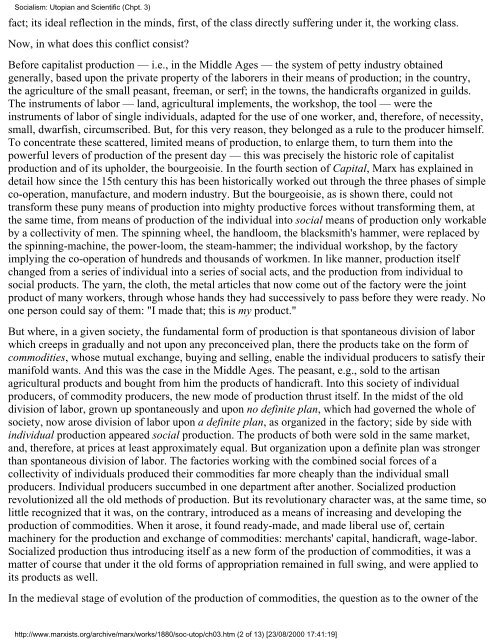
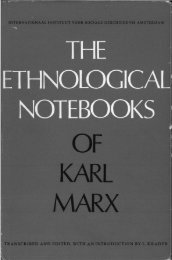

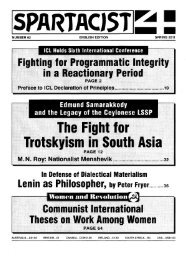

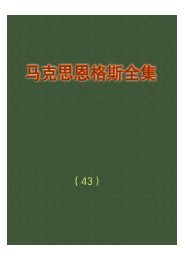
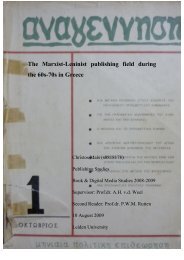


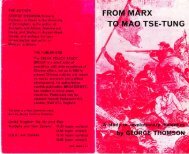
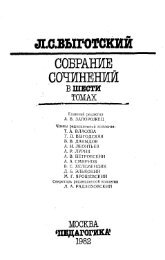
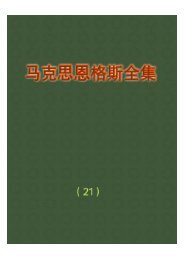
![tyf Enf=O=n]lgg](https://img.yumpu.com/47584932/1/190x245/tyf-enfonlgg.jpg?quality=85)
